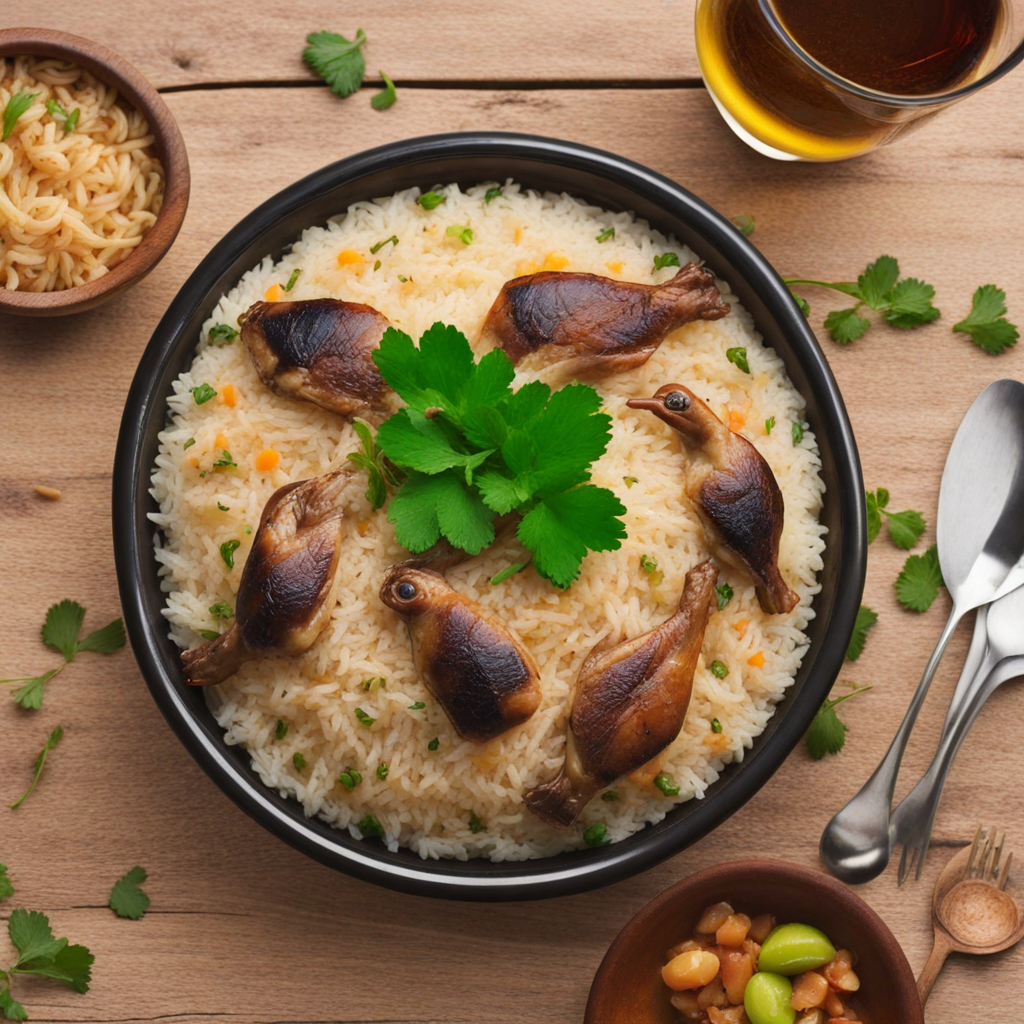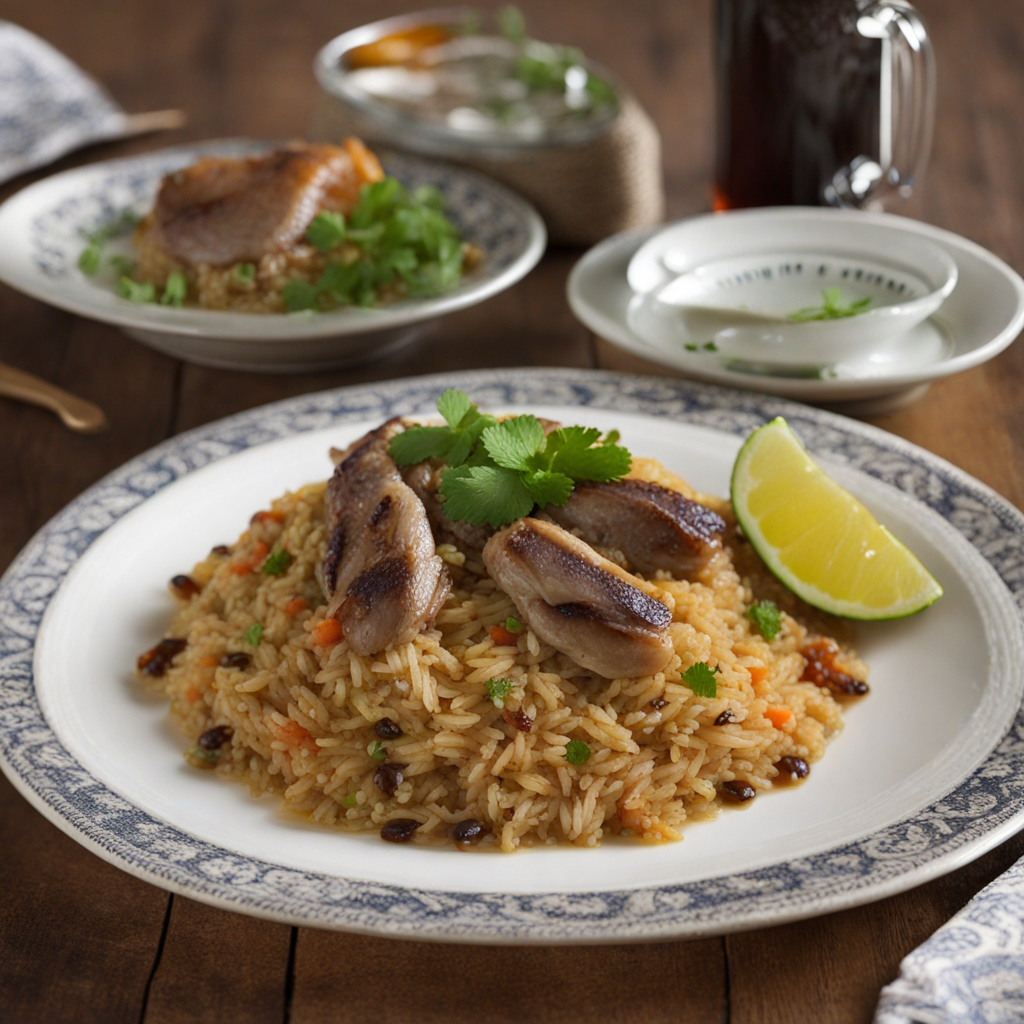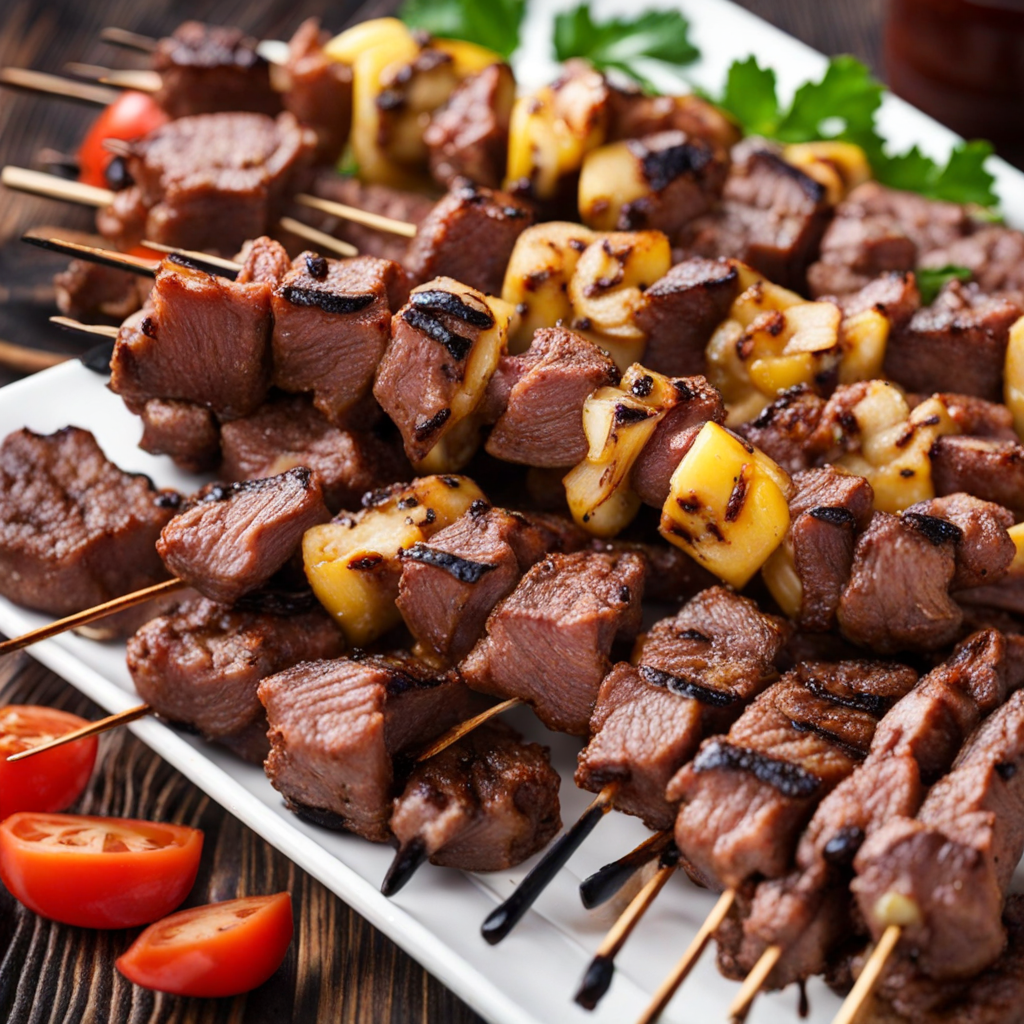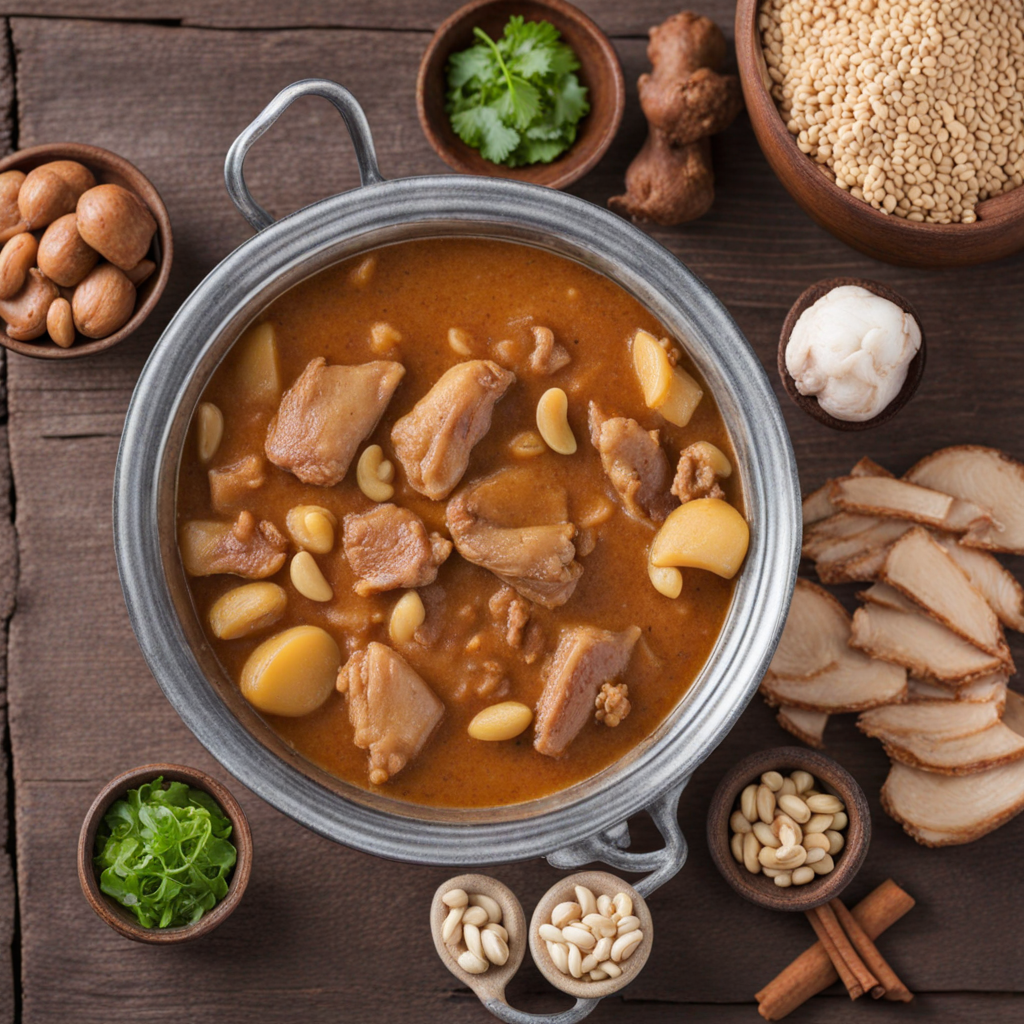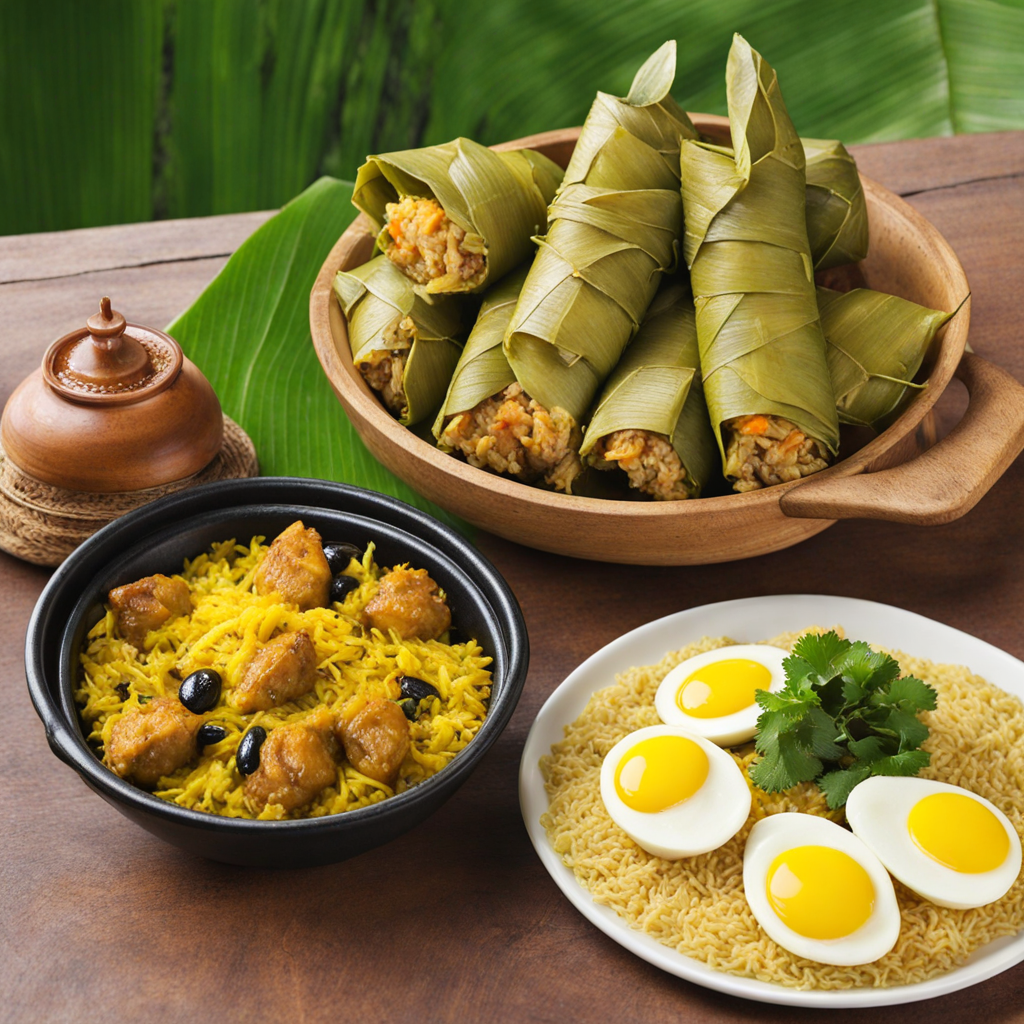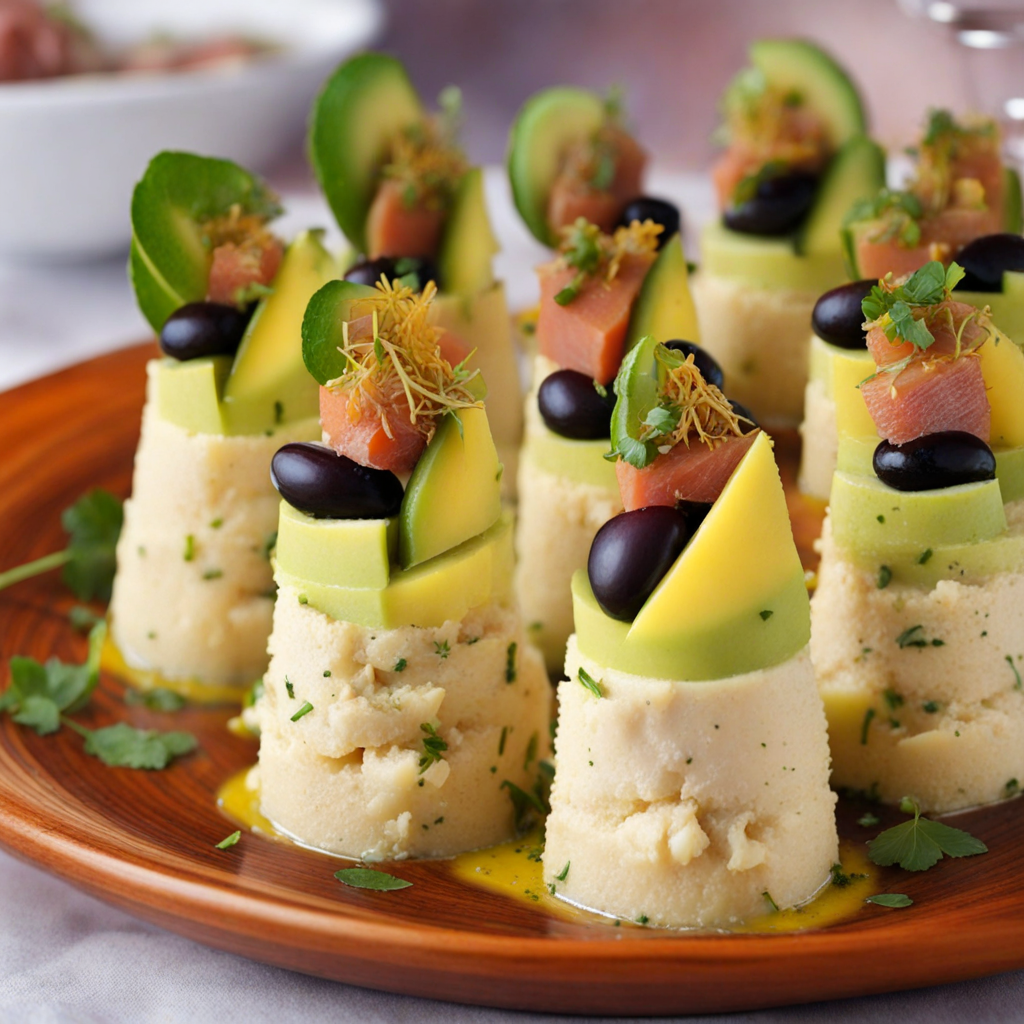Arroz con Pato
Arroz con Pato is a vibrant and flavorful dish that embodies the essence of Peruvian cuisine, marrying the rich traditions of its coastal and Andean regions. At its core, this dish features tender duck, which is marinated and then slow-cooked to achieve a melt-in-your-mouth texture. The duck is typically seasoned with a variety of spices, including cumin and garlic, and often incorporates the unique flavor of cilantro, which gives the dish its signature green hue. The meat is then simmered with rice, allowing the grains to absorb all the savory juices and spices, creating a harmonious blend of flavors in each bite. What sets Arroz con Pato apart is its use of local ingredients, such as the vibrant Peruvian yellow chili and fresh herbs, which enhance its taste and aroma. The rice is cooked alongside the duck, often in a rich broth made from the meat’s juices, resulting in a dish that is both hearty and satisfying. The final touch may include garnishes like peas or roasted vegetables, adding bursts of color and texture that elevate the overall experience. When served, Arroz con Pato is usually accompanied by a refreshing side of salad or pickled onions, which provide a delightful contrast to the richness of the dish. This meal is not just about taste; it’s a celebration of Peruvian culture, often enjoyed during festive gatherings or family meals. Each spoonful tells a story of tradition, warmth, and the culinary heritage of Peru, making it a must-try for anyone looking to explore new and exciting flavors.
How It Became This Dish
Arroz con Pato: A Culinary Journey Through Peru Arroz con Pato, translating to "rice with duck," is a celebrated dish in Peruvian cuisine, reflecting the country’s rich culinary heritage influenced by indigenous traditions, Spanish colonization, and the fusion of various immigrant cultures. This dish is not just a meal; it is a symbol of Peruvian identity and a testament to the country’s diverse gastronomic landscape. #### Origins The roots of Arroz con Pato can be traced back to the ancient cultures of Peru, where rice was introduced by Spanish colonizers in the 16th century. Before rice became a staple, indigenous peoples cultivated a variety of grains, including quinoa and corn. The introduction of rice, along with the domestication of ducks, paved the way for the evolution of dishes that combined these ingredients. Ducks were present in the Andean region long before the arrival of Europeans. They were domesticated by indigenous communities, who valued them for their meat and eggs. The combination of locally sourced ingredients with the newly introduced rice was a culinary innovation that emerged in coastal regions, particularly in the northern part of Peru, where the dish became popular. #### Cultural Significance Arroz con Pato holds a special place in Peruvian culture, especially in the region of Lambayeque, where it is often served during festive occasions and family gatherings. The dish embodies the concept of "comida criolla," which refers to the blending of indigenous and Spanish culinary practices. This fusion is a hallmark of Peruvian cuisine, celebrated for its bold flavors and vibrant presentations. The dish is also reflective of Peru's agrarian roots, emphasizing the importance of local produce and livestock. Traditionally, Arroz con Pato is prepared using duck marinated with spices and herbs, such as cilantro, garlic, and ají, a type of chili pepper. The use of these ingredients not only enhances the flavor but also showcases the biodiversity of Peru, where a multitude of herbs and spices are readily available. Moreover, the preparation of Arroz con Pato often involves communal cooking, where families come together to share recipes and techniques passed down through generations. This practice fosters a sense of community and connection, making the dish a cherished part of family traditions. #### Development Over Time As Peruvian cuisine evolved, so too did the preparation of Arroz con Pato. In the 20th century, the dish began to gain recognition beyond regional boundaries, especially with the rise of Peruvian gastronomy on the international stage. Renowned chefs like Gastón Acurio and others have played a pivotal role in promoting traditional dishes, elevating them to gourmet status while retaining their cultural significance. In the traditional preparation of Arroz con Pato, the duck is often cooked with a rich broth made from duck stock, cilantro, and spices, which gives the rice its distinctive green color. The duck is stewed until tender, allowing the flavors to meld, and then combined with the rice, creating a hearty and satisfying meal. Over time, variations of the dish have emerged, with some chefs opting to include additional ingredients, such as vegetables or different herbs, to give their own twist to this classic. The dish is often served alongside a side of salsa criolla, a tangy onion salad that adds a refreshing contrast to the richness of the duck and rice. This accompaniment is a staple in many Peruvian meals, further enhancing the overall dining experience. #### Modern Interpretations In recent years, Arroz con Pato has seen a resurgence in popularity, particularly among the younger generation eager to explore their culinary heritage. Restaurants across Peru and abroad are experimenting with the dish, incorporating contemporary techniques and presentation styles while remaining true to its roots. Some chefs are using organic or free-range ducks, emphasizing sustainability and ethical food practices, which resonate with today’s conscientious consumers. Moreover, the dish's adaptability has made it a canvas for creativity. Many chefs are now experimenting with different types of rice, such as jasmine or arborio, and incorporating various herbs and spices beyond the traditional cilantro, such as lemongrass or saffron, to create unique flavor profiles. These modern interpretations not only honor the original dish but also celebrate the dynamic nature of Peruvian cuisine. #### Conclusion Arroz con Pato is more than just a dish; it is a confluence of history, culture, and community. From its roots in ancient Peru to its modern-day interpretations, the dish tells the story of a nation that has embraced diversity and innovation in its culinary practices. As Peru continues to gain recognition as a culinary hotspot, Arroz con Pato stands as a proud representation of its gastronomy, inviting both locals and visitors alike to experience the flavors of Peru. In each bite of Arroz con Pato, one can taste the rich history of Peru, the blending of cultures, and the enduring significance of food in bringing people together. This dish is a reminder that food is not just sustenance; it is a vital part of our identity, heritage, and community. Whether enjoyed at a family gathering or a fine dining establishment, Arroz con Pato remains a beloved staple, evoking nostalgia and celebrating the vibrant tapestry of Peruvian life.
You may like
Discover local flavors from Peru


